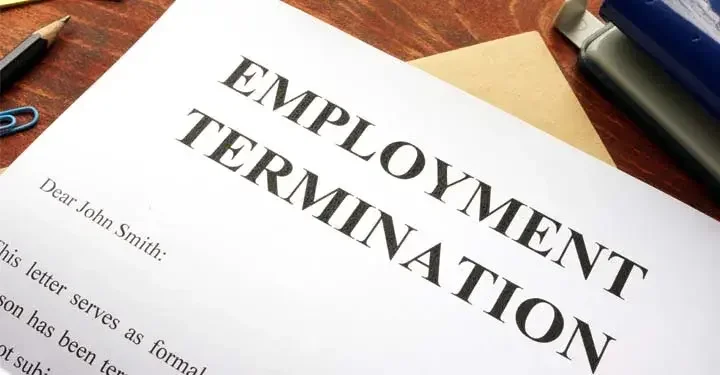One of the most unpleasant responsibilities for a business owner is terminating a worker's employment, a situation that can be stressful for both parties. A properly executed employee termination letter and a meeting with the employee can help to diffuse any potential problems if the employee seeks unemployment benefits or wants to sue for wrongful termination in court.
As long as you've documented the reason for the employee's dismissal in your termination letter, and the cause for dismissal is justified, you're protecting yourself from lawsuits and claims for unemployment benefits, which are usually not allowed if the employee is dismissed for cause.
Discussing employment issues
If you have an employee who is not performing to your company's standards, such as not adequately completing the responsibilities of his job or calling in sick too frequently, meet with the employee a few times to discuss how he can improve his performance. Keep a record of the dates and times you meet with him, including the length of the meeting and what you discussed. Make sure to give the employee concrete examples of what he's doing wrong and what you expect in the future. Meetings remind him that his job is in jeopardy and that, if he doesn't improve, he will be terminated.
Terminating employment
The proper way to terminate an employee is in a face-to-face meeting, not via a phone call or a letter. After you've terminated him, make sure he collects his personal effects and leaves immediately. Escort him out of the building and take someone with you to act as a witness in case there are problems.
Only after you've terminated the employee in your meeting do you give the employee a termination letter. You can hand him the letter at the end of the meeting or you can mail it to his residence.
Some states require termination letters and issue fines if you fail to write one. Other states have their own sample termination letters, so use your state's form, when applicable. If you're not sure whether your state requires a termination letter or if the state has its own form, check with an attorney about the laws in your state. Even if the letter isn't required, it's good practice to use it to document the reason for termination. Documentation is crucial in case the employee sues the company or files for unemployment, which he might not get if he's terminated for cause.
Make sure terminating the employee doesn't violate any laws, such as state or federal discrimination laws. If you're not sure, contact an employment attorney in your area.
How to write a termination letter to an employee
A termination letter is a formal letter to the employee confirming his firing, as per the discussion you have in your termination meeting. Follow these steps:
- Using company letterhead, include the date of the letter, the name of the employee, and the employee's address, work title, and home address.
- Start with a sentence that "this letter confirms that, pursuant to your discussion today [include date] with [name of manager], you are hereby terminated from your employment with [name of company], effective immediately."
- If the situation involves at-will employment, do not provide a reason for termination in the letter, although do refer to the employment as being at-will.
- If the termination is for cause, be specific. State what the employee did and when he did it, such as excessive absences from work and how many days he was absent. If he's being terminated for poor performance, include information on how the issue was addressed. For example, you could state: “Despite the extensive training you received on [date 1], [date 2], and [date 3], you are unable to properly perform your job in accordance with the job description." Without exaggerating, explain what the employee has been incorrectly doing.
- A termination letter to an employee due to business closure is reason enough for termination. State that the business is closing as of [include date], which is the termination date. If, however, the company is downsizing or there has been a decline in business, explain so in the letter and state that the company is eliminating his position or even his entire department.
- State that the decision for termination is final.
- Detail what the employee will receive as salary and/or severance pay.
- Explain how long the terminated employee's health benefits will last and that he can apply for COBRA. You can also give him the option to retain his insurance, but state in the letter that he would be responsible for the payments. State that the benefits that came with the job—such as having a company car, dental and vision insurance, child care, and use of the fitness room—have ended and that the company has deactivated the employee's keys, access codes, and email accounts.
- Detail what company property you've received from him and specify what company property he still has. State that if the items are not returned by [state date], the company will alert law enforcement.
- Advise the terminated employee that he signed a confidentiality agreement or that he must uphold the company's confidentiality policy.
- Wish him well in his future endeavors.
- Have a manager or an owner sign the letter, with their title and the name of the company.
Unless your state has a form that you are required to use, you can follow the above steps to create a termination letter that will protect you and your company. If you still need help, particularly in onerous termination situations, consider using an online service provider to create one for you.


